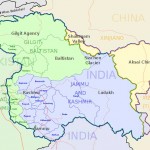IDR Blog
Is Chinese ‘debt-trap’ policy colonising the world?
The concept of business and economy is changing rapidly due to new technical innovations. China seems to be more conscious about the future market and it is not only increasing its domestic economy but also expanding its hands in other countries. It is said that the future war will be on ‘Economy’ and the country with the largest economy would be the most powerful in the future. Till 1980, the Chinese and Indian economies were on the same level. The Chinese economy grew 10 per cent per year in terms of GDP. It cannot be gainsaid that the Indian economy has also got the boost since 2000. There is also a fact that India is a democratic country where government changes after every election and this is not case with China. It does not have any democratic and federal system and the government is dictated by a single party. In China, the government can acquire any land without taking people’s consent. It has the authority to demolish any building to implement its project. This is not possible in India- in India, any land is acquired legally which takes time and land acquisition is not possible without taking people’s cognizance which always creates hindrance in implementing developmental projects.
The special economic zone has a very massive role in the development of a nation. It does not only create employment opportunity but also works as a catalyst in the manufacturing sector. It is worth mentioning that India had its first special economic zone (SEZ) in Kandla, Gujarat, 1965. On the other hand, China had its first SEZ in 1978. Now the numbers of Chinese SEZs have increased and the size and productions of Chinese SEZs are far more than that of India and it has contributed more in increasing Chinese exports in the world.
In the wake of its growing exports in the world, China is deliberately striving its monopoly on the world’s economy. Gradually it is capturing the small nations through its ‘debt-trap’ policy. Firstly, it provides the loan to weaker countries on higher interest rates and when its debt is not paid by them it captures their land and resources. In recent years, China has captured Sri Lankan Hambantota port on 1.1 $billion deal as Sri Lanka was not able to pay back Chinese debt. It is widely discussed that China might use it as a military uses to counter India. Though, recently in a conversation with Uday India, Sri Lankan outgoing High Commissioner to India Chitranganee wagiswara said that Sri Lanka will never allow Hambantota for Military uses. Not only this, Chinese investment in Sri Lanka has increased more than India, especially in infrastructure and development sector.
Like Sri Lanka, China has investment vastly in Maldives’ airport, seaport and Infrastructure. A few months back, when Abdullah Yameen, president of the Maldives declared a state of emergency and arrested the two most senior Judges, India warned the Maldives and advised it to resolve the issue as soon as possible. The Maldive government ignored India due to Chinese support and it has even decided to return helicopter gifted by India.
In Pakistan, China is developing ‘Gwadar Port’ and investing $63 billion in China-Pakistan Economic Corridor (CPEC) project, a deal which was earlier closed on $46 billion. Here it is interesting to see how Pakistan will sustain this much Chinese debt. It is worth mentioning that debt of Pakistan is soaring and its fiscal deficit is widening. Now it is said that newly elected Pakistani prime Minister Imran Khan might seek more debt from China to pay off Chinese lenders who have invested in the CPEC and if it happens, Pakistan would be the second country after Sri Lanka caught in Chinese dept-trap policy.
In Nepal too, Chinese meddling has increased more in recent years, especially after deadly tremor, 2015. Chinese investment in Nepal is currently 30 billion, where Indian investment in Nepal is approximately 9 billion. However, it is another subject to debate that India is always the first choice of a common Nepali for employment and they carry more than 30 billion from India. Coming to the point, this was the Chinese meddling that Nepali prime Minister KP oli, a leader of the Communist party of Nepal (United Marxist-Leninist), who came to power with help of Pushpa Kamal Dahal (Prachanda), Communist party of Nepal (Maoist-Centre) is pushing hard to facilitate cross-border rail and road connectivity with China. India will have to be more conscious on this because Chinese presence in Nepal will be really a big security threat for India. Not only this, very recently Malaysian prime Minister Mahathir Mohamad in his visit to China canceled the Chinese-funded East Coast Rail Link project and a natural gas pipeline project in Sabah as Malaysia has already $250 billion debt. He said that his country cannot repay Chinese debt. This is showing the Chinese aggression in Asia and the world.
Now when we talk on Africa, China has extended its footprints tremendously in African countries. According to a report by Financial Times, in 2000, China-Africa trade was a mere $10bn in the African region. By 2014, that had risen more than 20-fold to $220bn. Over that period, China’s foreign direct investment has increased from 2 per cent to 55 per cent there. China has invested hugely in South Africa, Algeria, Nigeria, Zambia, and Ethiopia etc. in mining, construction, and manufacturing sectors. There is a surprising data regarding its investment in African countries. Till 2015 US investment was more than China, but in 2017 China invested hugely in the African market and its investment has increased five times more than the US right now.
The fact of the matter is that the common Chinese investment in every country is in infrastructure development, which is clearly pointing out Chinese intent to sell its products all over the places and monopolize the market.
Courtesy: https://udayindia.in/2018/08/29/is-chinese-debt-trap-policy-colonising-the-world/




